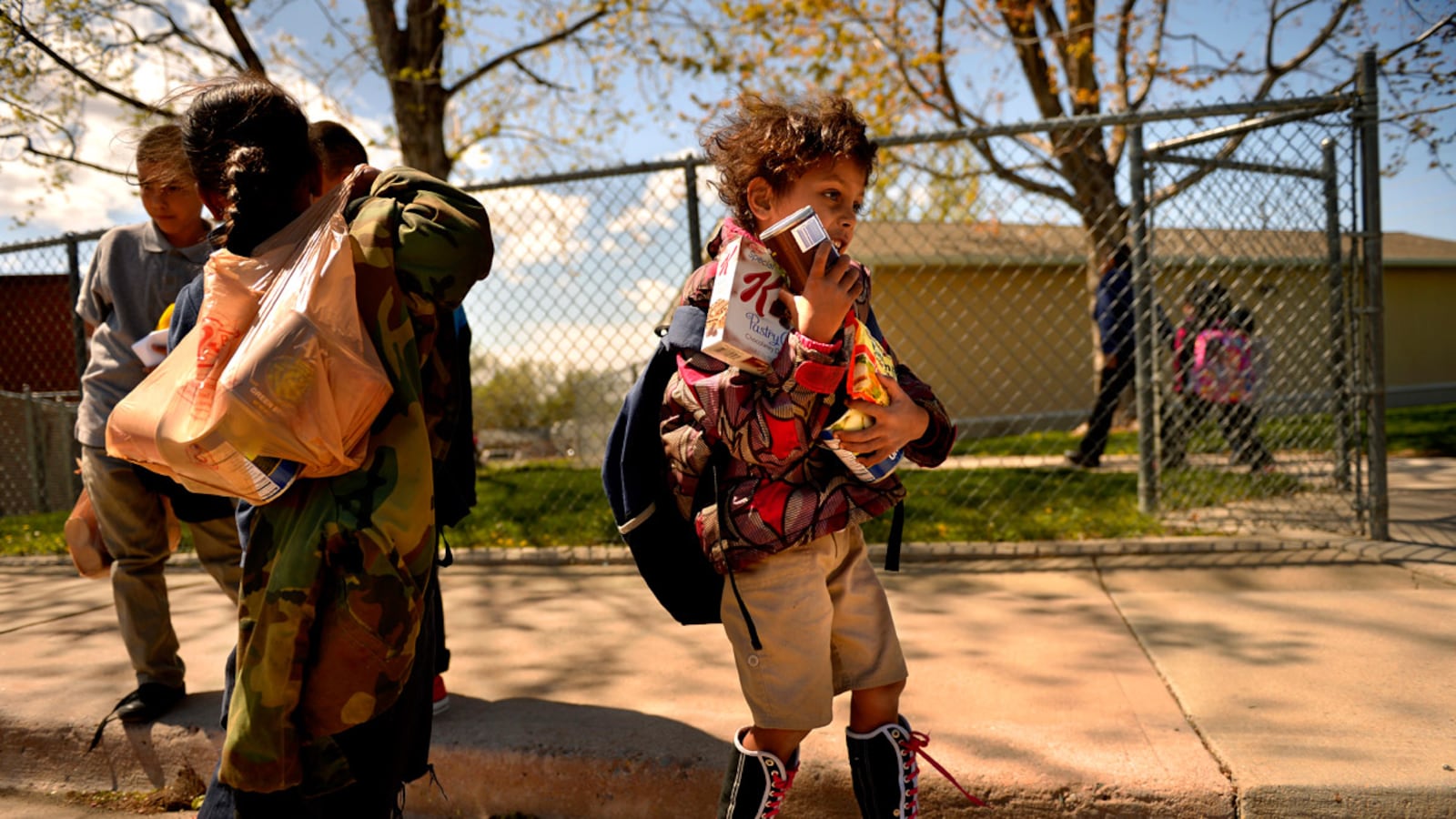Among traditionally high-poverty school districts in metro Denver, most are seeing more students from low-income families and a few are experiencing a decline, according to new data.
Many of those same school districts have substantial numbers of homeless students, too. That picture also has shifted, with most of those high-poverty Denver area districts posting declines in homeless students. Officials caution, however, that what might seem like a promising trend might be a result of other factors that sell short the extent of the problem.
Enrollment data for the current school year was released by the state on Tuesday. The data, compared to previous year’s data, shows that most metro area school districts that serve high numbers of students that qualify for free or reduced price lunch — including Adams 14, Westminster, and Englewood — have seen a jump since 2014 in the percentage of those students.
At the top of that list is the Sheridan School District, southwest of Denver, where in 2014, 84.7 percent of students qualified for government-subsidized lunches. In 2017, 90 percent of Sheridan students qualify. And overall, the small district has shrunk — it’s now down to about 1,400 students — as families squeezed by a rise in housing prices moved out, officials said.
“What we’re hearing through our families is that some landlords are escalating rents monthly by a hundred dollars, which is a challenge,” said Michael Clough, the district superintendent.
One district, Denver Public Schools, reported a significant drop in the number of students qualifying for free or reduced price lunches. The school districts in Aurora and Mapleton have experienced flat or slight decreases from 2014 to 2017.
Metro area school districts with highest numbers of students who qualify for free or reduced price lunch:
Statewide the number of students who qualify for free or reduced price lunch decreased compared to last year, although the number of homeless students has increased.
Many districts in the metro area have seen a drop in the number of students reported as homeless, including in Aurora, Adams 14 and Westminster.
Officials in Adams 14, where the percent of homeless students dropped to 4.08 percent from 7.4 percent in 2014, said they worry that families are less willing to identify as being homeless, especially with concerns about immigration crackdowns.
“It’s been more of a search to try to find those families,” said Ruben Chacon, Adams 14’s director of climate and culture. “Our liaison goes to the couple of affordable housing complexes and knocks on doors to try to find kids we haven’t located.”
Chacon said that he tracked district students who were identified as homeless last year, and found that many have transferred out of the district. The Adams 14 boundaries don’t include much new housing, and as families exhaust their temporary situations, they leave, he said.
“There really isn’t a large affordable housing option available for new entries,” Chacon said. “We have a lot of long term residents and a lot of people who moved here as the housing market became more expensive in Denver, but if you look at the inside of our boundaries now we pretty much have zero housing growth.”
The Sheridan schools, on the other hand, are seeing a continued rise in the number of homeless students. Almost one in four Sheridan students are experiencing homelessness, an increase from 2014.
“We find it to be unbelievably stressful on families and on children, and our teachers as well,” Clough said. Because of the small size of the district, he said, officials are able to connect with homeless families and point them to various resources, including health services and a food bank, meaning many families might choose to stay nearby for the help instead of fleeing.
One district that hasn’t traditionally served high numbers of students from low-income households, Jeffco Public Schools, is now one of just three metro-area districts seeing a rise in homeless students. At the start of the current school year, 2.35 percent of Jeffco students identified as homeless.
Rebecca Dunn, coordinator of Community and Family Connections in the Jeffco district, said she believes a big part of the increased numbers is that the district is doing a better job tracking and identifying students who are experiencing homelessness.
“Our online registration system now has a very clear area where families can mark if they are experiencing homelessness and then what type,” Dunn said. “So we’re able to get that information much quicker. We also have just improved our outreach to schools so they know what to look for and are able to do that in a really sensitive manner.”
Percent of students who are reported as homeless in metro area school districts:
Below is a map highlighting the percent of a school district’s student population that qualifies for free or reduced price lunch in 2017. The darker-colored districts have a higher share of this group of students. Click on any district to see their percent.
Note: Data is not available for districts in red.

